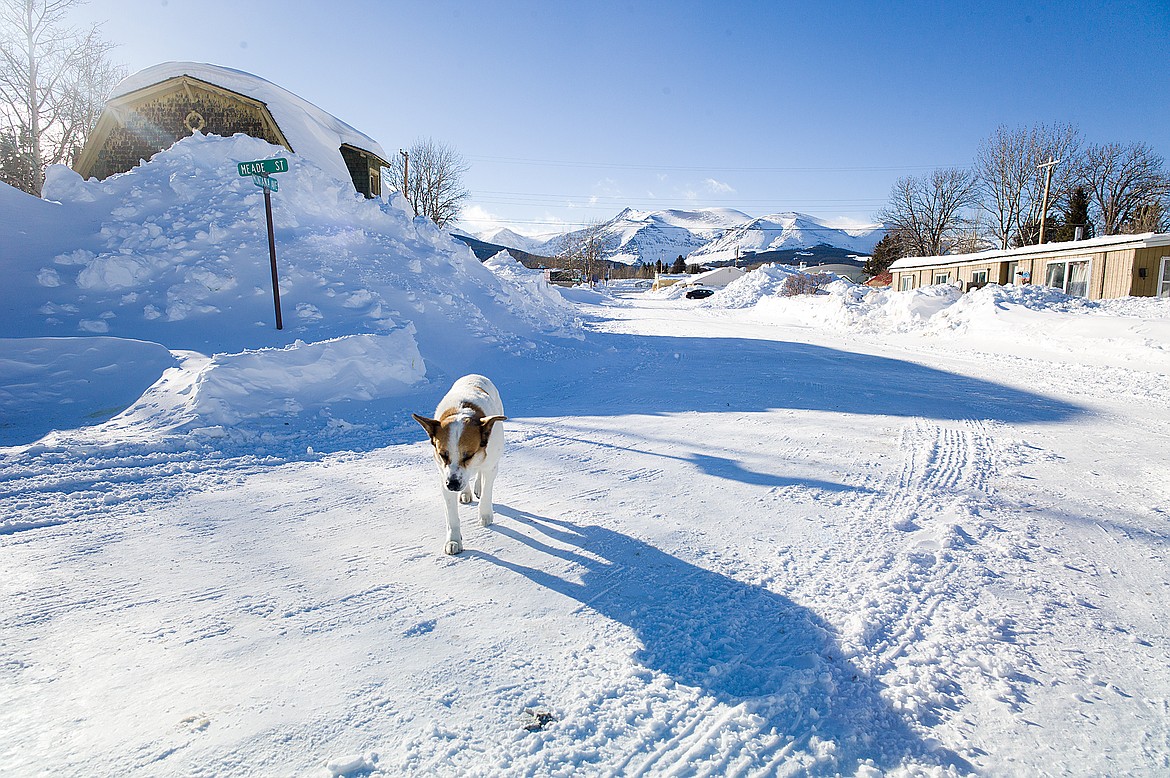East Glacier Park has seen 235 inches of snow this winter
No doubt, it’s been snowy winter, but some places have been far snowier than others.
East Glacier Park has seen 78 inches of snow this month — a new record. Overall, East Glacier has seen 242 inches of snow since July 1. The record is 270 inches set in 1972, according to National Weather Service data. The records for East Glacier date back to 1949.
Ground blizzards were a problem on Saturday, closing U.S. Highway 2 from Snowslip to Browning for several hours. Another blizzard struck Tuesday, closing the road again. Homes in Browning were buried, and multiple cars were off the road.
Gov. Steve Bullock declared a state of emergency Tuesday. The declaration covered the Blackfeet, Fort Belknap and Northern Cheyenne reservations and Glacier and Golden Valley Counties. It authorizes Bullock to mobilize additional state resources, including the Montana National Guard, to protect life, health and property. It also allows local governments to be reimbursed for the costs associated with the storms.
Bullock also temporarily loosened restrictions on how many hours commercial drivers can work when carrying diesel fuel, propane and heating oil. He said the change would ensure the needed fuel would reach those areas.
East Glacier Park has drifts that are about 20 feet tall in places.
The west side of Glacier Park is also well above normal for snowfall.
West Glacier has seen 141 inches of snow to date. The normal is 99.2 inches and the record, also set it 1972, was a whopping 251 inches. Currently there’s about 45 inches of snow on the ground in West Glacier. The record for this time of year, also set in 1972, was 58 inches, according to the National Weather Service.
Columbia Falls, so far, has seen 91.6 inches of snow this winter, which is a new “record” but the station hasn’t been around long — the data only goes back to 2009.
The snowpack in the Flathead River Basin is now about 157 percent of average. Snowpack is water in the proverbial bank. As it melts, it keeps stream flows through the summer months.
Snowpack can lessen the impact of the early fire season, but if no summer rains come, like last summer, there’s still a high potential for wildfire by mid summer, as trees and grasses dry out and the vegetation cures in the heat. Last winter was also cold and snowy. One February storm alone brought five feet to East Glacier Park in 2017.
Winter will continue its grip on the region this week, with another round of snow possible by the weekend.
“There’s no real change to spring-like weather in sight,” said meteorologist Bob Hoenisch of Great Falls.






